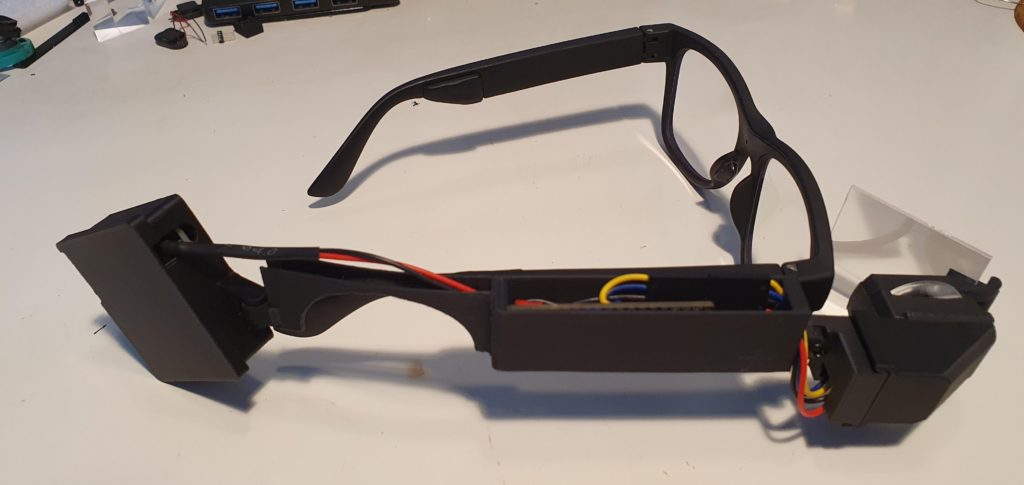27

Google rarely enters the hardware world and when they do, they receive a mixed reception. The smart glasses were very controversial when they first launched, due to privacy and fashion concerns. But the idea was a good one: a wearable computer that gave you a heads-up display (HUD) at all times. Unfortunately, even today’s Google Glass models are very expensive. That’s why this Redditor built their own DIY smart glasses using affordable components.
The pair looks a lot like a bulkier version of Google Glass and they perform a similar function. The wearer gets a HUD positioned in front of one eye that displays useful information. In this case, the information comes from a separate device via Bluetooth. The software is still in development, but these glasses could theoretically display any information from a connected smartphone, such as navigation or text messages. The screen is monochrome and has a low resolution, but it is enough for basic graphics and text.

The primary component is an Arduino Nano 33 BLE. That drives a 0.49″ OLED screen through an I2C connection. A lens and mirror project the screen onto a clear phone case lined with HUD film intended for cars. Power comes from a small 450mAh lithium-ion battery. The frame is off-the-shelf, but the enclosure for the electronics is a custom 3D-printed affair. It allows for adjustability, making the screen clear and readable. The software isn’t ready yet, but the STL files are available if you want to build your own DIY smart glasses.
The post Giving Google Glass a run for its money appeared first on Arduino Blog.

![[Tony’s] $60 Bluetooth Head Mounted Display is compatible with Android and Linux](http://makezineblog.files.wordpress.com/2014/08/arglasses-overview_preview_featured.jpg?w=200&h=200&crop=1)


